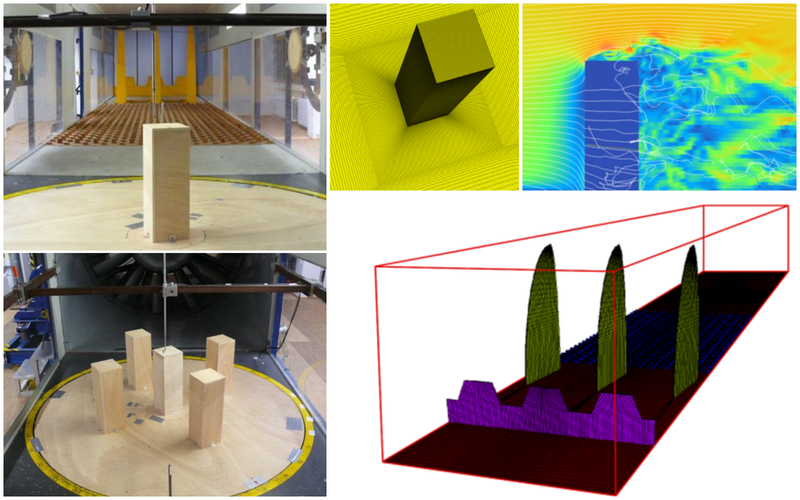Wind flow in urban environments is governed by a variety of complex factors, such as the heterogeneous geometry of buildings, separation and recirculation and local thermal effects. Streets and random layout of buildings could generate zones of high speed and vortices in the connecting passageway between buildings, which could potentially cause a hazard on facades and roofs of the buildings. Detailed information about wind flow characteristics in the urban environment provides useful guidelines for building plans and layouts to the architects and engineers. They are essential for the designers of tall buildings and also play an important role in the determination of wind harvesting potential in urban areas.
Aim of this topic is to examine the wind flow characteristics in urban areas as well as the pressure field on the surface of the building in both experimental (WT measurements) and numerical (using computational fluid dynamic - CFD) ways. The obtained data is later used for further analyses of the interference effect and potentials for wind energy extraction above the roof of the buildings.
The experimental investigation was carried out in a Boundary Layer Wind Tunnel located at Ruhr University Bochum, Germany, as a part of Short Term Scientific Mission (STSM). Tests included four different building models:
- High-rise building model with a flat roof
- High-rise building model with a tilted roof
- Low-rise building model with a tilted roof
- The industrial low-rise building (hanger) with a tilted roof
The interference effect of the surrounding buildings was investigated in case of the high-rise building with the flat roof, high-rise building with the tilted roof and low-rise building with the tilted roof. All these configurations included the main building surrounded with four interfering buildings of the same geometry.
Numerical simulations of experiments offer additional insight into certain problems. The OpenFOAM Finite Volume open source code has been used to numerically evaluate the flow field using the LES turbulence approach.


